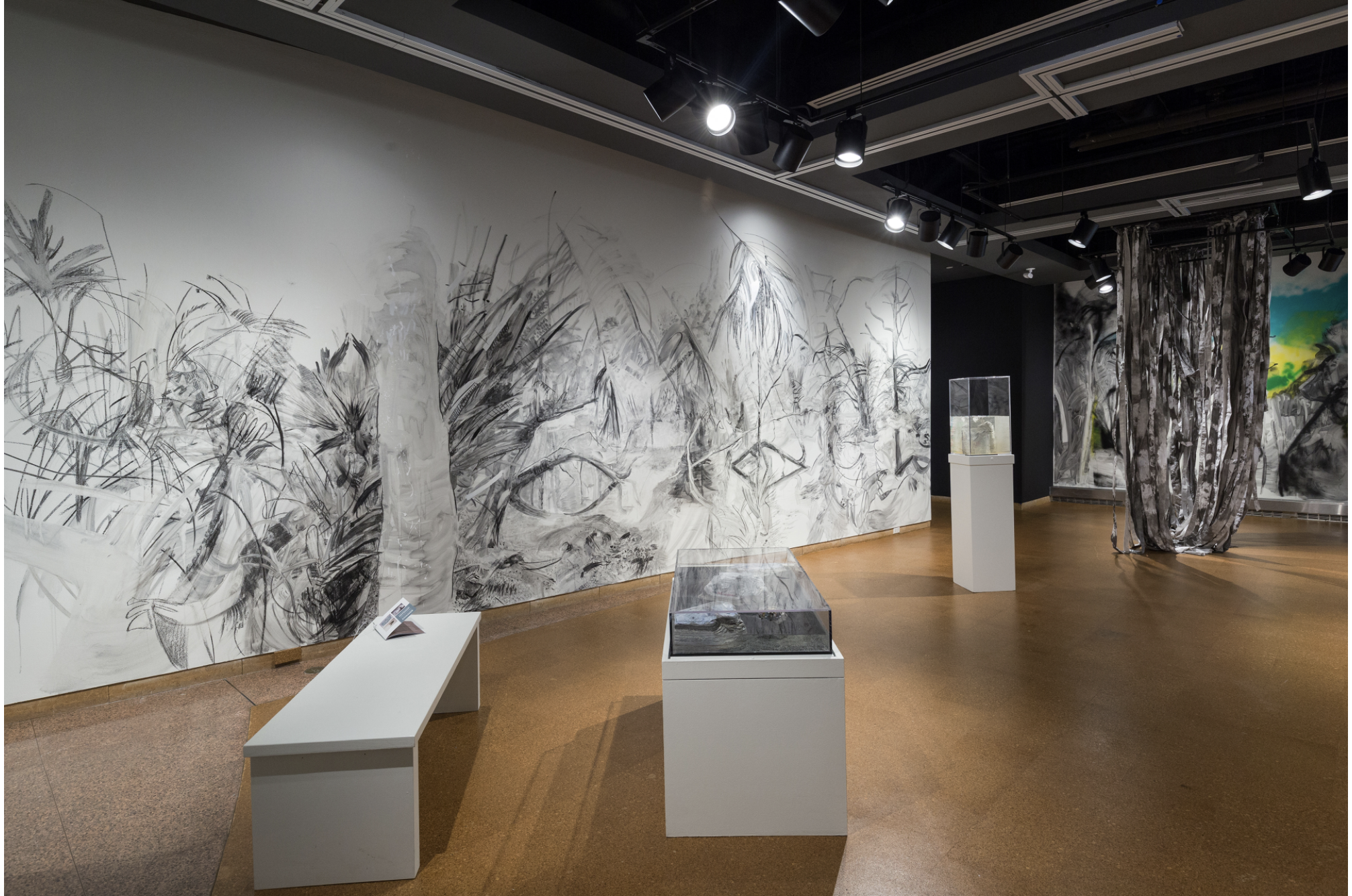Rachel Gray: Empathy, Honesty, and Visual Storytelling
Credit: Rachel Gray
Rachel Gray’s work is a whole. It combines process with object, communication with understanding, empathy with imagination. It speaks about how we experience our worlds and how, in turn, we communicate our experiences, relate to one another, and inhabit our surroundings. I’ve had the distinct pleasure of discussing Rachels's work with her over a coffee and a zoom interface…ah, the pandemic.
Over the years I’ve gotten glimpses of Rachels's work, but after seeing her mural drawings in 2019, at the I Came Back and Things Were Different exhibition in City Hall, I experienced her work in full force. The engulfing scale of these drawings, done directly onto the wall, bore the strong fingerprint of her process; that energy of making the work, experimental problem solving, and awareness of the space wove together inexorably.
Rachel’s practise takes many forms and has various sprouts and offshoots. She works in large scale drawing, painting, video, performance, and an ongoing monotype-based graphic novel. All distinct, yet within each of these variant approaches, there is a unity—a similar driving force.
Credit: Kristina Corre
Rachel’s work and our discussion came again and again to the notion of communication. Communication as a way to close the gap between herself and her subject matter; communication that is formed through a bond of empathy. Rachel’s work is an attempt to reach out for a connection between herself and the outside world and, in turn, to present this through storytelling.
This sense of communication in Rachel's work is underlined by honesty. Rachel is interested in how experiences are often contradictory, never as cut and dry as we often describe them. For Rachel, honesty allows her work to grasp the actual complexity of our experiences. “Experience is so profound and contradictory,” Rachel says. “I really appreciate art for the opportunity to look at a single moment, experience, sensation, and really actually try and talk about that.”
“Honesty is also a way to be brought into contact with the experience of other people,” says Rachel. Honesty allows for a holistic engagement with the outside world, becoming an ethical tool to navigate storytelling. Rachel’s work is often about her lifelong friend Jessie, and their relationship is the subject of her graphic novel, Jess. Here, Rachel unpacks the experience of Jessie’s two strokes, moving lovingly and viscerally between Jessies’s experiences and her own. The novel chronicles their ability to communicate, and Jessie’s profoundly changing relationship with her outside world. Rachel incorporates illustrated interviews with Jessie and her mom into the graphic novel, directly involving their voices.
Credit: Rachel Gray
This process of understanding and honest communication is also translated into Rachel’s work dealing with organic subject matter and the natural world. Closely entangled roots, branches and leaves swirl in these gestural graphic drawings. Never a distant forest or landscape, these spaces are direct and immediate, vibrating with energy.
She begins these landscapes, (though I hesitate to describe them as such, they are like a living forest portrait) by imagining how these organic materials perceive their world, how the earth feels for them, the sensation of rain. Even though understanding is impossible, Rachel values this link, and hones an empathetic relationship with the flora and fauna of these drawings. This presents the starting point for her work, it influences her mark making and consequently the feelings conveyed.
Credit: Kristina Corre
These large scale drawings radiate with her touch; there is a sensation of movement and the body. Her process involves a nexus of listening to music, dancing, and the empathetic leap to understand the subject. She tries to morph herself into her subject matter, using her physical body as a way of connecting with the physicality of the subject. The body and the touch of drawing becomes a way to tell a story through images.
Credit: Julia Martin
One of the connecting features across Rachel’s work is the emphasis placed on storytelling. Rachel asked, “what could a work be if it wasn’t a story?” For her, the act of making and the act of storytelling are fused. Each medium she works with is a different language; an image is hard to pin down, its meaning complex and emotive, whereas writing offers striking and exquisite specifics. As Rachel’s practice has developed, so has her ability to tell stories through different means:
“I pull the parts of things that I like from different mediums to create a document that does multiple things at once, that’s specific in the incorporation of language, and also has this moment where the image takes over and can resonate in a way that skirts around language, in order to speak about experience in a more whole way.”
Combining all of these characteristics, Rachel’s video work, Interchange (2020) is a constellation of drawn animation, photographs, videos, and drawings. Calmly and intimately, Rachel narrates a story touching on her relationship to writing, to reading, to imagination, in an experience that is stimulated and illustrated by moving images, the rhythm of sound, and the cadence of her voice. The work examines the pleasure and pressure of reading and her childhood struggle with dyslexia. She is frustrated with the institutional pressures weighing on language, and on the flip of the coin, language as the spark plug that ties us to our world, and allows us to imagine worlds anew. Interchange stands out, and like all of Rachel’s work it resonates deeply.




